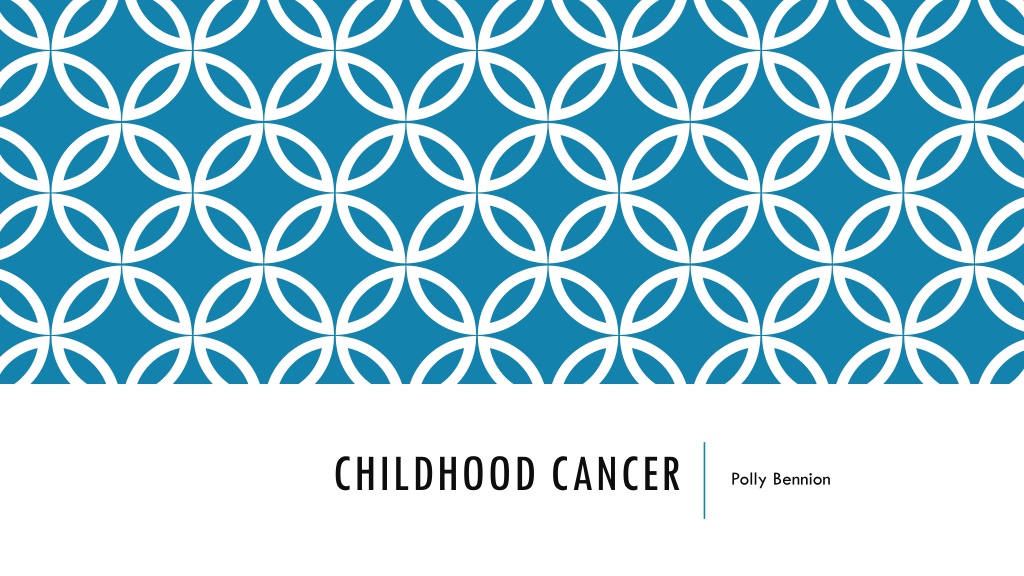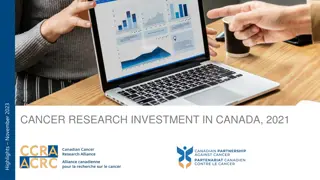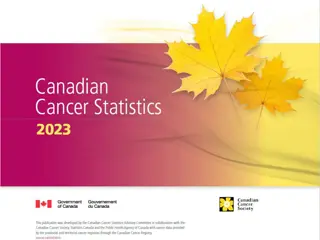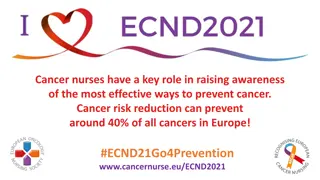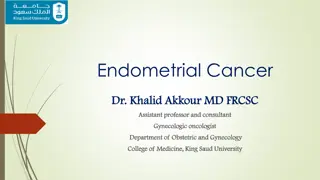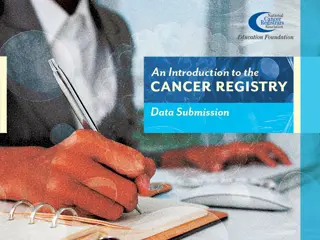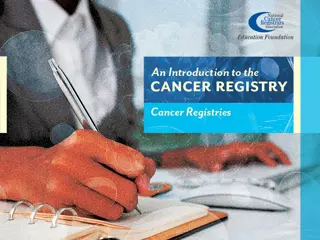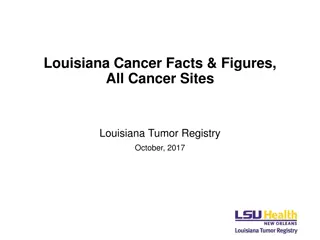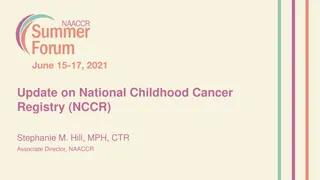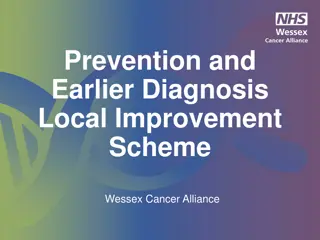Understanding Childhood Cancer Incidence and Diagnosis in General Practice
Childhood cancer is a significant cause of death in children in the UK, with 1 in 500 children developing cancer by age 14. GPs play a crucial role in diagnosing childhood cancers, recognizing red flags, and providing support during and after treatment. Common cancers include leukemias, brain tumors, lymphomas, and more. Diagnosis can be challenging, but early detection is key.
Download Presentation

Please find below an Image/Link to download the presentation.
The content on the website is provided AS IS for your information and personal use only. It may not be sold, licensed, or shared on other websites without obtaining consent from the author. Download presentation by click this link. If you encounter any issues during the download, it is possible that the publisher has removed the file from their server.
E N D
Presentation Transcript
CHILDHOOD CANCER Polly Bennion
OBJECTIVES To understand the incidence of childhood cancers and the chances of seeing it in GP To increase confidence in diagnosis, particularly RED FLAGS Briefly discuss the common cancers and treatments Consider the role of the GP during treatment and importantly afterwards
HOW COMMON IS IT? Childhood cancer is the biggest medical cause of death in children aged 1 14 in the United Kingdom 1 in 500 children in the UK will develop cancer by age 14 1 in 285 children and young people will develop cancer before the age of 20 The average GP surgery would expect to see a case of cancer in a child or young person approximately every two and a half years The average GP would expect to see a case of childhood cancer just under every 11 years, meaning they may see 3 or 4 cases in a career
WHICH ONES ARE THE MOST COMMON? 1. 2. 3. 4. 5. 6. 7. 8. 9. 10. Hepatic tumours Leukaemias 30% Brain and Spinal tumours 27% Lymphomas 11% Soft tissue tumours 6% Neuroblastoma 5% Renal tumours 5% Malignant bone tumours Germ cell tumours Retinoblastoma
DIAGNOSIS DIFFICULT BEWARE OF SYMPTOMS THAT ARE PERSISTANT, UNUSUAL OR WORSENING PAIN THAT WAKES A CHILD FROM SLEEP CAN NOT BE IGNORED 3+ ATTENDANCES increases the risk of the symptoms being due to cancer up to 10-fold
Headaches (worse in the morning) RED FLAGS Constant tiredness Weight Loss Persistent vomiting (especially in the morning) Sudden vision change, true diplopia, new onset squint, loss of red reflex Excessive bruising Recurrent or persistent fevers of unknown origin Pallor
Pallor, persistent fatigue, bone pain, unexplained pyrexia and infections, lymphadenopathy, night sweats, weight loss, hepatosplenomegaly, unexplained bruising, petechiae, bleeding LEUKAEMIA Acute Lymphoblastic Leukaemia (ALL) Over production of lymphoblasts (B cell and T cell) Infiltrate bone marrow Inhibit normal cell functioning 400 new cases a year in UK Peak incidence 2-3 years of age Boys>girls Lengthy treatment 2 years for girls, 3 years for boys Stem cell transplants for high risk groups and early relapse Almost 90% survival Acute Myeloid Leukaemia (AML) Over production of myeloblasts 70 new cases a year in UK 6 months intensive treatment High remission rate but up to 25% will relapse 65% 5 year survival
Persistent or recurrent vomiting (especially in the morning), new balance or co-ordination problems, behaviour/personality change, tiredness, headaches, unusual eye movements, new squint, blurred vision, diplopia, new seizure onset CNS TUMOURS Most common solid tumours 400 new cases a year in UK Late presentation Astrocytoma (40%) most common 75% are low grade and have a 95% 5 year survival but High grade has less than 20% 5 year survival Treatment usually surgery plus radiotherapy Neurological disabilities
Painless lymphadenopathy of a single gland, fevers, night sweats, itching, weight loss, cough/breathlessness LYMPHOMAS Hodgkin Reed-Sternberg cell! M>f 96% 5 year survival Non-Hodgkin M>F B cell ( usually in the abdomen) T cell (usually in the chest) 88% 5 year survival
THE ROLE OF THE GP DURING TREATMENT Often very little contact but: Named GP acting as single point of contact within the surgery keeping up-to-date with the progress can be very beneficial particularly for the family Annual influenza vaccine (not live nasal version) for all children receiving chemotherapy and for 6 months after Can provide support Recommend resources Grace Kelly Ladybird Trust The Compassionate Friends Children s Cancer and Leukaemia Group The Teenage Cancer Trust The Rainbow Trust HeadSmart A Child Of Mine
7 out of 10 children and young adults survive their cancer THE ROLE OF THE GP AFTER TREATMENT Vaccination schedules often need to be repeated from the beginning Childhood cancer survivors are on every GP list (35,000 in the UK) 95% will have a significant health-related issue by the time they are 45 Direct from the cancer From the treatments growth and pubertal problems, fertility problems, cardiomyopathies, neurocognitive, dentition From psychosocial aspects e.g. PTSD, depression, anxiety Increased risk of primary malignancies later in life Low threshold for referral to specialist services
